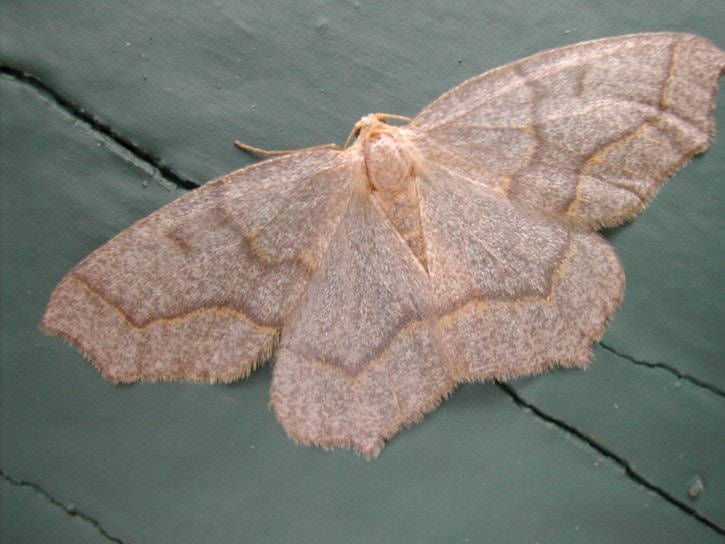The hemlock looper is a grey moth that can be identified by the brown stripes and black dots on its wings. It’s scientific name is Lambdina fiscellaria and the larvae feeds on the leaves of conifers, notably hemlock, balsam fir and spruce.
Approximately every nine years, its population explodes, resulting in the defoliation of large portions of forest. 2012 is expected to be one of those years.
“It can kill a tree in one year and certainly two, if a tree is severely defoliated,” said Art Stock, an entomologist with the BC Forest Service.
A severe outbreak of hemlock looper can kill off patches of forests and an infestation can have a major impact on forest health. Fortunately, it’s not considered too big a worry. “I’m not really concerned,” said Gregg Walker, a forester with Parks Canada. “There’s no reason necessarily to think it will be a huge outbreak or terribly severe. We just know it’s possible so we’re going to monitor it.”
The female hemlock looper lays its eggs on trees in the late summer and fall. They gestate over the winter and the larvae hatch as caterpillar’s in the spring. The larvae then goes on a feeding frenzy, munching away at leaves and needles of the trees it lives on.
Every year, Parks Canada and the BC Forest Service conduct an aerial survey to monitor the health of the forest. The survey allows them to know if an outbreak is occurring and whether or not its getting bigger or smaller.
According to records dating back to 1937, an outbreak occurs approximately every nine years – the actual range varies from four to 15 years. The last one was in 2002 and minor outbreaks were observed the last two summers. An outbreak can last from two to four years, said Walker.
“It’s different from mountain pine beetle because that one is totally out of proportion to what happened historically,” said Walker. “Whereas hemlock looper so far has been – at least in this region – has been continuing it’s historical pattern.”
So why bring it up? The forest service will be spraying the pesticide Btk (Bacillus thuringiensis var. kurstaki) on 7,500 hectares of forest north of Revelstoke in response to the expected outbreak. It’s being done to protect mountain caribou habitat.
“What we’re trying to do is prevent tree mortality in the caribou areas so that the lichen the caribou feed on continues to be produced and we don’t have fire hazards, which is a by-product of large areas with dead trees,” said Stock.

An infestation of Hemlock Looper. Photo by Simon Hunt/Parks Canada.
In the national parks, spraying would only be done if the looper started to threaten caribou habitat or popular tourist sites, said Walker.
Both Stock and Walker consider the looper a natural aspect of forest health. The larvae chews away on the leaves, creating dead tree tops that then fall to the ground and in turn create animal habitat. The trees can then grow a new top, as long as they weren’t too badly damaged.
“There’s almost a mathematical equation as to how many trees in a stand will get defoliated and how many will die as a result,” said Walker. “What we know is it takes more than one year’s defoliation [to kill a tree] so we have a year to plan ahead.”
He sees it as a part of forest succession so he doesn’t get too concerned about the looper – it’s simply something that is monitored. “Mostly the forests recover and then you have scattered tree death, which is part of forest succession.”
Meanwhile, the looper has its own natural enemy – a parasite that explodes in numbers as the looper does and kills it off.
“If there’s a population explosion of the loopers then pretty soon there’s a population explosion of some kind of parasite and it brings that population down to a really low level,” said Walker.
For the record, according to the province the pesticide Btk has no known toxic effects on humans or other mammals; birds, plants, fish and most insects. It is a bacteria that is found naturally in the ground that causes illness in caterpillars such as the looper.
